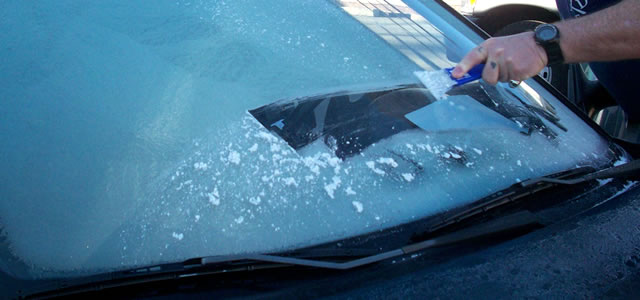If you’re interested in the Institute of Advanced Motorists (IAM), check out the details at the bottom of the page. Ed
IAM Chief Examiner Peter Rodger said: “When there’s snow on the ground, avoid travelling unless absolutely necessary, and don’t ignore police warnings or advice to not travel on specific routes. Can you work remotely or change your schedule?”
Advice on driving safely
If staying in the warmth of home is not an option, the IAM offers the following advice on driving safely through this period:
- Make sure your windows are clear and that you have all-round visibility before you set off.
- Take the time to thoroughly clear your roof and windows of snow.
- When driving in snow, get your speed right – not too fast that you risk losing control, but not so slow that you risk losing momentum when you need it.
- Start gently from a stationary position, avoiding high revs. Stay in a higher gear for better control and, if it is slippery, in a manual car move off in a higher gear rather than automatically using first.
- If you find yourself in a skid, the main thing to remember is to take your foot off the pedals and steer – only use the brake if you cannot steer out of trouble.
- Double or even triple your normal stopping distance from the vehicle in front so you are not just relying on your brakes to be able to stop. It simply may not happen!
- It’s better to think ahead as you drive to keep moving, even if it is at walking pace.
- Plan your journey around busier roads as they are more likely to have been gritted. Avoid using short cuts on minor roads – they are less likely to be cleared or treated with salt, especially country lanes and housing areas.
- Bends are a particular problem in slippery conditions – slow down well before you get to the bend, so that by the time you turn the steering wheel you have already lost enough speed.
- On a downhill slope, get your speed low before you start the descent, and do not let it build up – it is much easier to keep it low than to try and slow down once things get slippery.
What to do if in difficulty
And if the worst does happen:
- Keep track of where you are. If you do have to call for assistance, you need to be able to tell the breakdown or emergency services your location so they can find you.
- If you must leave your vehicle to telephone for assistance, find a safe place to stand away from the traffic flow; the next driver could lose control in the same place.
- On motorways and dual carriageways it is always better to leave your vehicle and stand a short distance behind and to the safe side of it. Don’t stand in front of it if at all possible.
- Balancing the risks of a collision and hypothermia is something that depends on your situation.
To help drivers stay safe this winter, the IAM has launched its winter driving campaign which includes a dedicated website, www.drivingadvice.org.uk, with traffic updates, weather forecasts and tips on how to drive safely in winter. Check it out before you travel.
How to join
For those wishing to develop their driving skills in a friendly informal manner the island has its own advanced motorists group which is affiliated to IAM and ROSPA. They meet on the last Wednesday of the month at Newchurch Pavillion, Watery Lane at 7.45pm. The evening comprise of guest speakers, visits and interactive discussion.
The next meeting is on 30th January and will feature a talk from Mark Trimmer (Regional
Operations Manager) about the developments within the IAM nationally. All are welcome and
refreshments are available at the end of the meeting. For more information see our website.
Future Meetings Events
January 2013 – Mark Trimmer IAM (Regional Operations Manager)
February 2013 – Bobs You Tube Clips or Quiz
March 2013 – Nigel on current driving topic
April 2013 – Harwoods garage visit
May 2013 – Skidoo
June 2013 – AGM
July 2013 – TBA



